A lot of customers email us asking for help choosing between the Olympus Trip and Olympus Pen camera when buying a 35mm film camera. We have written this article to help you make your decision and shed some light on the best parts of both these cameras.
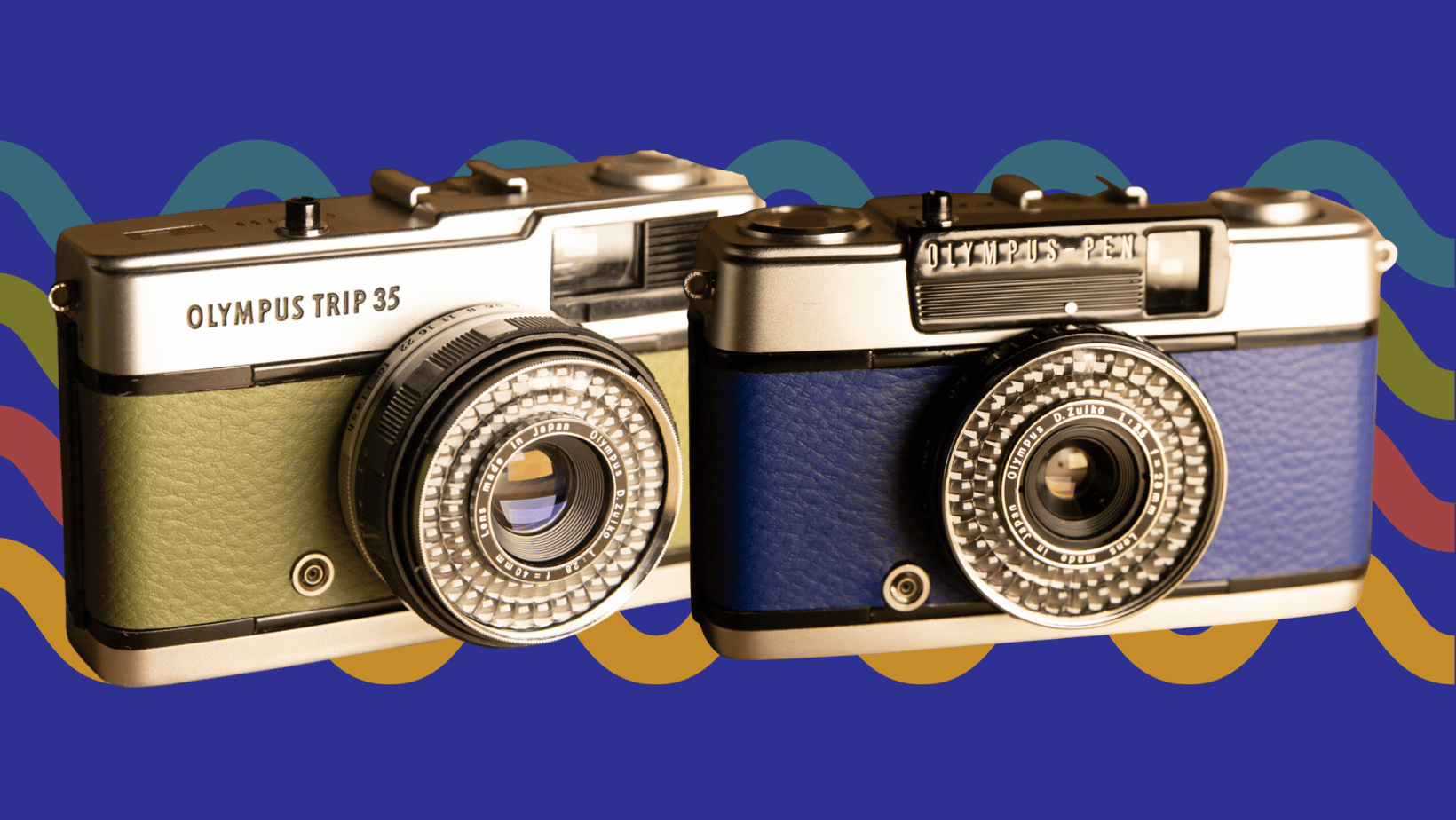
DISCLAIMER: for this article, when we refer to the Olympus Pen, we are referring to the EE range of cameras, such as the Olympus Pen EE-3, Olympus Pen EE-2, and Olympus Pen EF. We also occasionally refer to the Olympus Pen EES-2.
To start off, let's recap on each of these cameras and their features individually.
What is the Olympus Trip?
The Olympus Trip 35 was introduced in 1967, and discontinued in 1984, which is considered a long production run for a 35mm film camera. Over ten million Olympus Trip cameras were sold in this time.
Many people wrongly call the Olympus Trip a rangefinder camera, however we would classify it more as a point and shoot with zone focusing.
You can read more about the Olympus Trip here:
But otherwise, here is a quick breakdown of its main features:
- Zuiko 40mm f/2.8 lens
- Focus settings (zone focusing)
- ISO settings
- Red flag feature
- Full-frame
- Powered by selenium light cell
- Manual advance and rewind
- Flash hotshoe
The Olympus Trip has a great range of features, and a lot of photographers love the red flag feature, which is common across the range of Olympus Pen cameras as well.
The main thing to remember about the Trip when comparing it to the Olympus Pen cameras is that it is a full-frame camera and has focus settings.
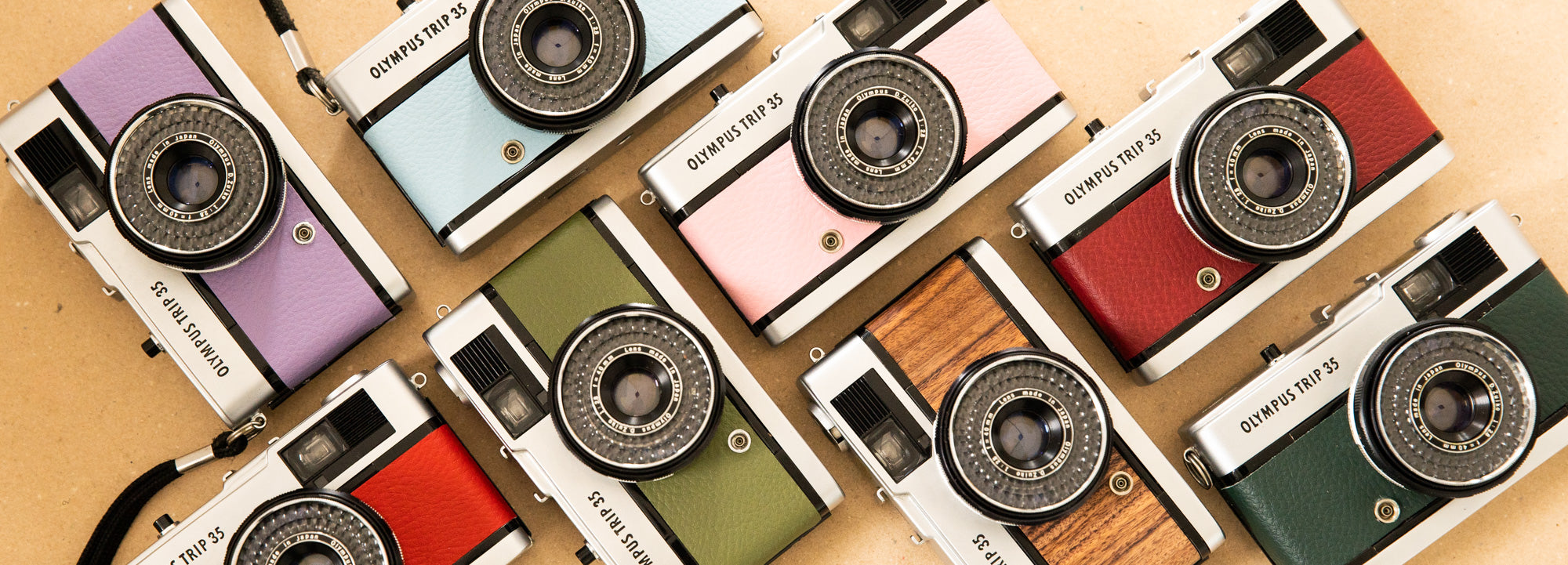
What is the Olympus Pen?
OK, hold your horses. There are a few different types of Olympus Pen that we are talking about here in this article. All of them are excellent cameras, and we want to help you make the best decision for you!
All of the Olympus Pen cameras we are talking about have the same principal features.
Here is a breakdown of the main features on the Olympus Pen range of cameras:
- Half-frame
- Red flag feature
- ISO settings
- Powered by selenium light cell
- Manual advance and rewind
These cameras begin to differ when you look at the finer details of the camera, such as the focus settings and the type of lens the camera has.
The first, and most popular, Olympus Pen we are talking about is the Olympus Pen EE-3.
This Olympus Pen has a 28mm f/3.5 lens. This makes it the most wide angle of the Olympus cameras in this article (not including the EE-2, which is its baby brother.)
This Olympus Pen has no focus settings and is considered a true point and shoot film camera.
You can read more about the Olympus Pen EE-3 here:
We will glance over the Olympus Pen EE-2 here. It is identical to the Olympus Pen EE-3, except that the trim and details are grey rather than black.
We stock this camera in a small range of pastel colours for those who like the lighter things in life.
The next Olympus Pen that we think is worth comparing against the Olympus Trip is the Olympus Pen EES-2.
The Olympus Pen EES-2 has a 30mm f/2.8 lens and focus settings. These are the same zone focus settings you will find on the Olympus Trip.
The Olympus Pen EES-2 is one of our favourites, but increasingly hard to get hold of. So if you see one in stock and would like, we recommend being as quick as possible!
Last, but not least, we have the Olympus Pen EF.
Similar to the Olympus Pen EE-3, in that it does not have focus settings, the Olympus Pen EF stands apart from the rest of the Pens as the only one with a built-in flash. This is the camera for the night-time shooters.
OK, now we've got through all the different types of Olympus Pen that we want to discuss when comparing them to the Olympus Trip, lets move on to the comparisons.
Which Camera is Better: the Olympus Trip or the Olympus Pen?
Better is a BIG word. So, let's break it down to more manageable questions.
Which camera will produce higher quality images?
The Olympus Trip and Olympus Pen cameras all have great Zuiko lenses. They are super sharp, and produce wonderful images from edge to edge.
However, when it comes to the final image quality you get from the lab, the Olympus Trip will produce higher resolution images, as it is a full-frame, not a half-frame. As the full-frame image will be larger (physically), the image is less enlarged when scanned and printed.
That being said, half-frame cameras still stand up to a very good quality, and we have seen some incredible prints from half-frame cameras.
If you are looking for a camera to produce images that you can have enlarged on your wall as a print, we would recommend the Olympus Trip. However, if you are looking to just have images on your phone, or printed as 6" x 4" in your photo album, the Olympus Pen cameras are plenty quality enough for this.
Don't forget, the quality of your scans from the lab will greatly impact the quality of your photographs. This is why we are partnered with Gulabi, who always provide high resolution scans with their develop and scan services.
Below is a side by side comparison of the quality of images taken on the Olympus Trip (left) and the Olympus Pen EES-2 (right).
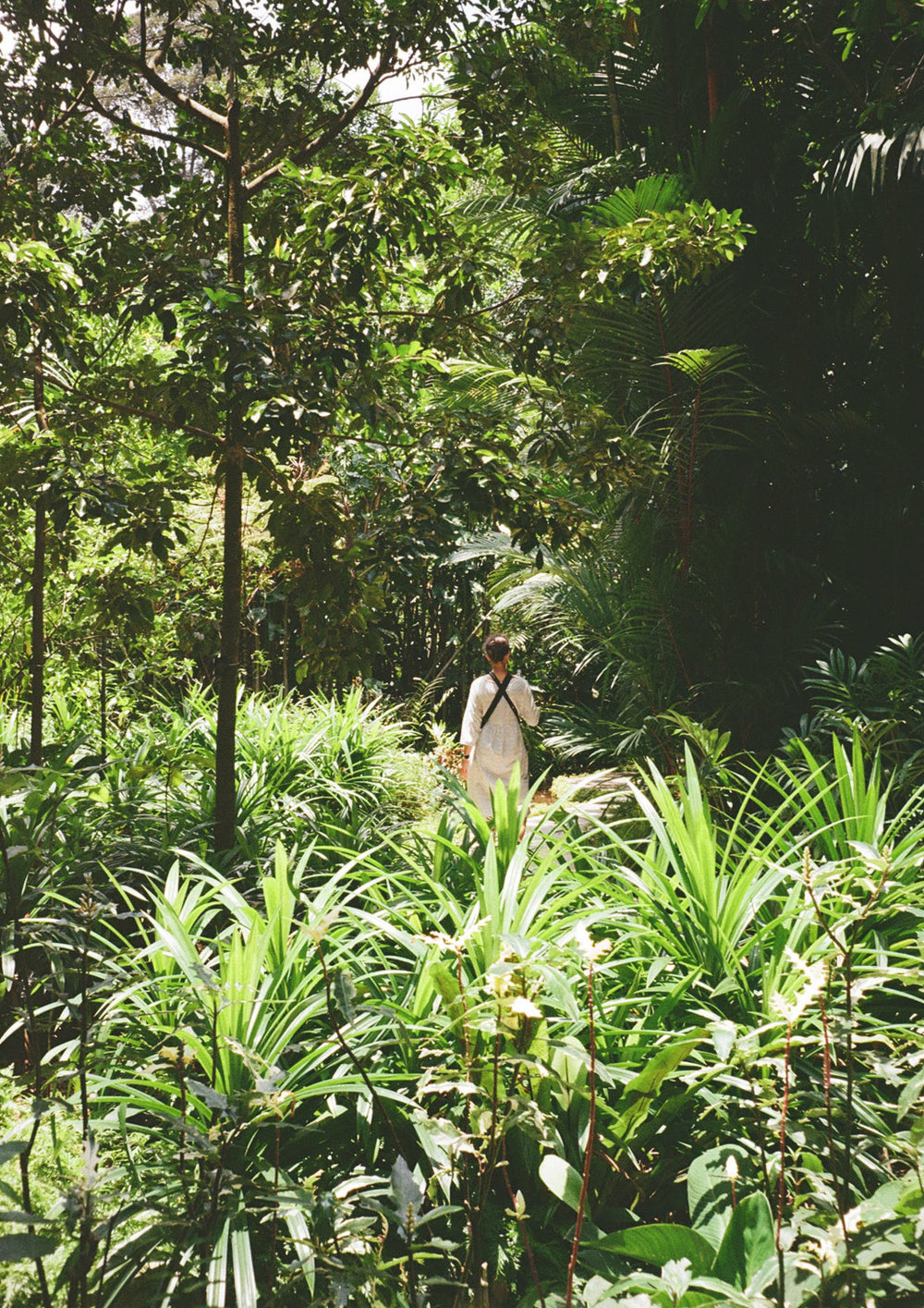

I want to be able to control how my images come out; which camera should I get?
The Olympus Trip and Olympus Pen cameras are mainly automatic. The shutter speed and aperture is determined for you when using the cameras on automatic mode. This is where the camera uses the selenium light cell around the lens to determine how much light will reach your negatives and how to correctly expose your image.
Where you do have some creative control is with the focus settings of the camera. As previously mentioned, the Olympus Trip has focus settings, as does the Olympus Pen EES-2. This means you will be able to control the focus of your image, for example when taking a close-up portrait, you will be able to choose that your subject is in focus close to the lens.
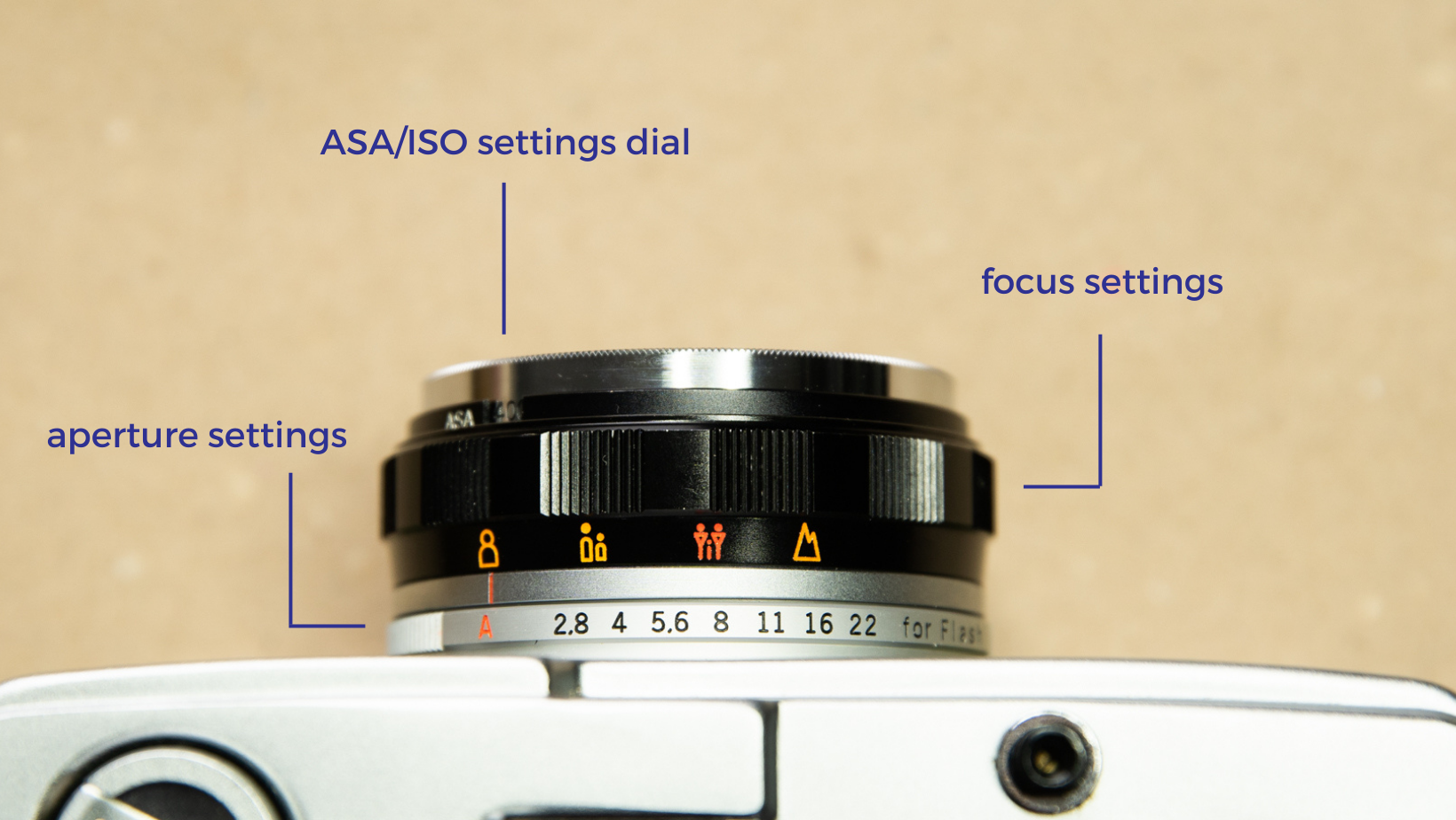
Both of these cameras use the same zone focusing system, which is shown above in the coloured symbols on the lens. These symbols indicate how far away the subject of your photo is. You can read more about these focus settings here.
So all you really have to weigh up when choosing between these two cameras is whether you want the camera to be half-frame or full-frame.
I travel a lot; which camera is most compact?
We LOVE to travel with our film cameras. Having a compact camera is something that is so so helpful.
The most compact camera out of the ones we are talking about would be the Olympus Pen EE-2 and Olympus Pen EE-3. Both of these cameras fit in the palm of your hand, and because they don't have focus settings, their lenses are very close to their bodies.
Another plus point for this camera when travelling is that you can take 72 shots on a 36-exposure roll of film. This means you get double the amount of photos for each roll of film, meaning you can take less film with you when you travel.
I'm a night-time shooter and need a camera with flash. Which one should I get?
The only camera on this list with a built-in flash is the Olympus Pen EF. It is also the most lightweight of the bunch, as well. When you do not have enough light for an image, simply pop up the flash and you are ready to take great night-time images.
This camera is perfect if you are looking to take photos of your friends on nights out, or capture the nocturnal happenings of your local area.
Now, we don't want to burst your bubble, but technically any of the cameras here could be used at night. The Olympus Trip and the Olympus Pens are all compatible with an external flash (and we sell some really small ones!)
Having a built-in flash makes life a lot easier, but read our blog here about how to use the Olympus Trip at night. The same rules apply for the Olympus Pen cameras as well.
Which camera is more economical?
This one is quite an easy answer. The Olympus Pens trump the Olympus Trip here simply because they are half-frame. You will get twice the amount of photos on one roll of film, effectively making your film 50% cheaper.
Which camera is easier to be repaired?
We repair and refurbish lots of Olympus Trips and Olympus Pens every month. Both of these cameras, whilst they have parts that age, are fully repairable by our team at Cameras By Max. We have enough spare parts to build cameras from scratch, and repair the ones that need some love.
Both of these cameras are easily repaired (by a professional.) The Olympus Trip has more parts readily available, and if you did not use our repair services, other repairers are more likely to have Olympus Trip parts than Olympus Pen parts.
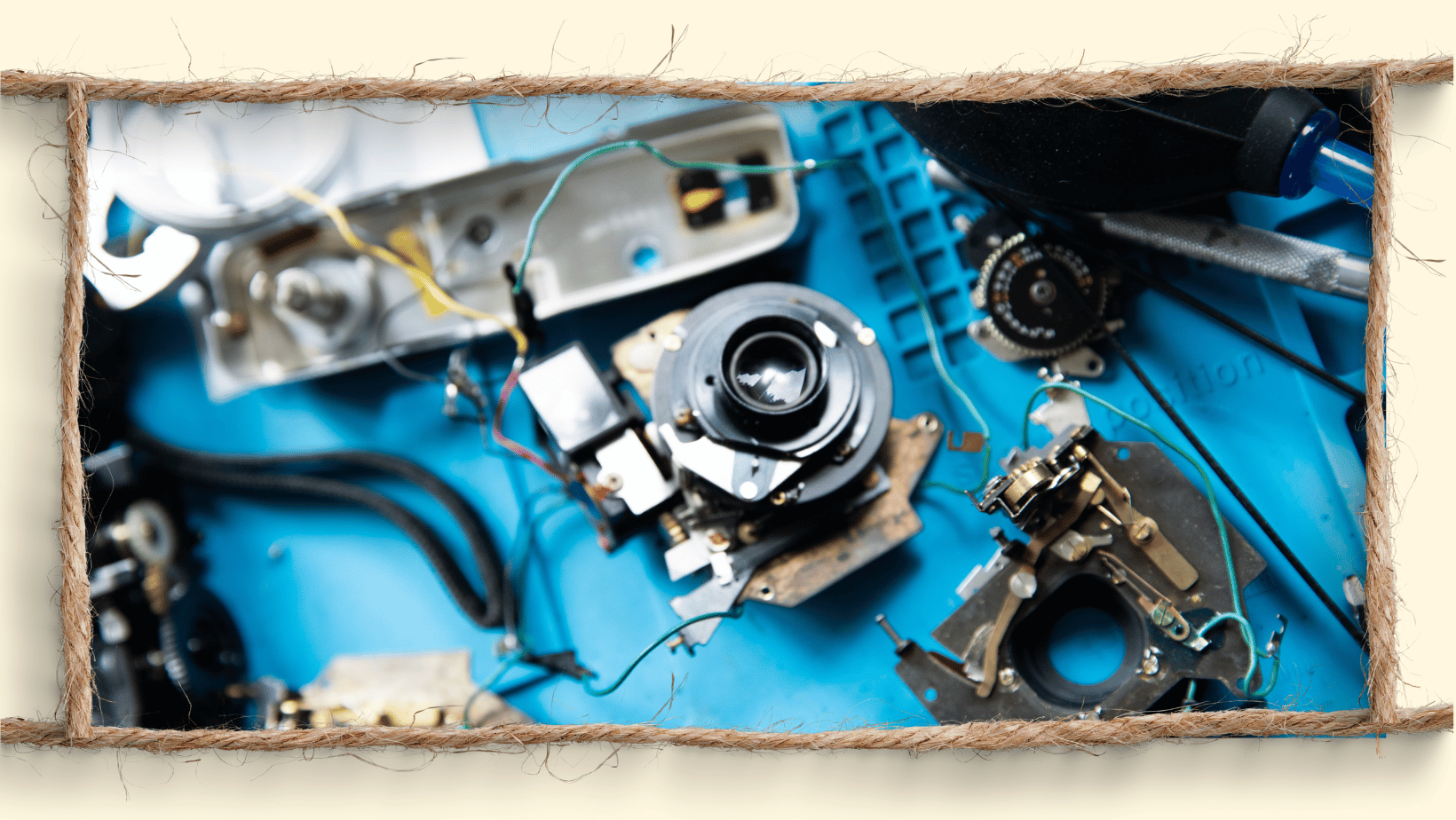
I am still not sure which camera to get.
Don't worry! Simply send us a message on our live chat, or email us here. We are always here to help, and no question is discouraged.
If you are unsure if either of these cameras are right for you, try our film camera quiz. All you have to do is answer a few questions, and then you will get a list of personalised camera recommendations.
If you like what we do, but can't buy a camera from us, please consider buying us a cup of coffee! It helps us to keep these resources free, consistent, and accessible.










